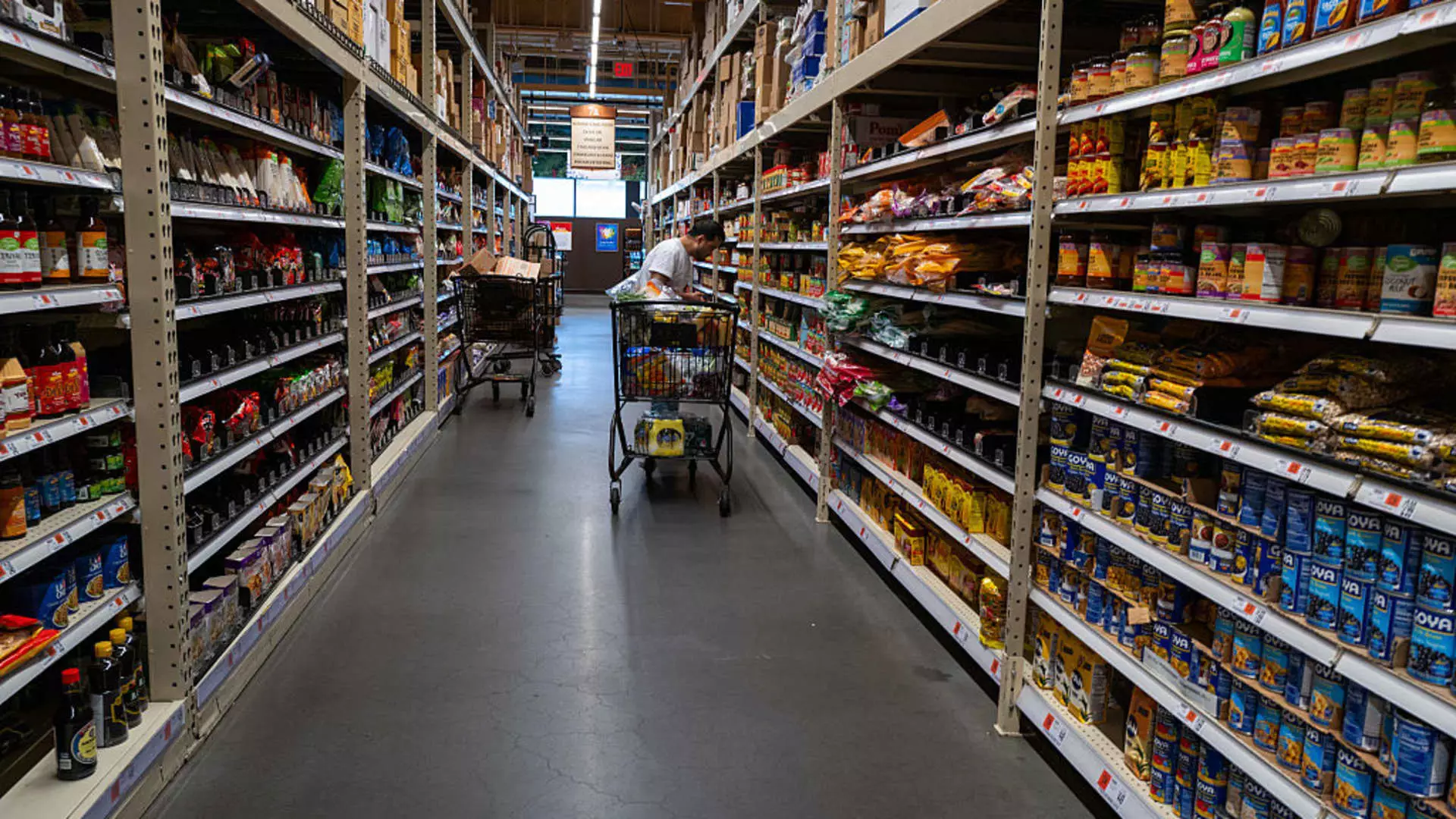The April metrics on inflation have stirred little enthusiasm, as evidenced by the latest report from the Commerce Department. For the most part, the personal consumption expenditures (PCE) price index moved scarcely at all, with an increase of just 0.1% over the month. While this figure aligns neatly with the consensus projections of the Dow Jones, it embodies a lackluster reality that the American public grapples with daily. Annual inflation has dipped slightly to 2.1%, which may initially appear manageable but belies deeper underlying issues in consumer behavior and economic vitality.
Despite inflation not making any dramatic leaps, the core inflation figures—which exclude the volatile food and energy sectors—paint an equally troubling picture. Here, economists were expecting a reading of 0.1% and an annual rate of 2.6%; instead, they received a mere 0.1% for the month and a subdued 2.5% for the year. This slight deviation may seem trivial, yet it highlights the cautious disposition of consumers, who seem to be tightening their belts. Consumer spending has slowed to a mere 0.2% increase, well below the more robust 0.7% seen just a month earlier. In many ways, this palpable caution reflects a broader sentiment within the economy: one of hesitation, fear, and uncertainty.
Consumer Sentiments: The Rise of Caution
The personal savings rate tells a compelling story of a populace stricken by trepidation. Rising from 0.6% to a notable 4.9%, this increase demonstrates that Americans are opting to save rather than spend—a trend typically indicative of a lack of confidence in the economy. It signifies a shift in consumer outlook, where the promise of economic growth gets overshadowed by fears of instability exacerbated by external factors, including President Trump’s erratic trade policies.
Despite a noteworthy surge in personal income of 0.8%, significantly outpacing the 0.3% forecast, the overarching narrative remains one of caution. Investors and consumers alike are keeping a watchful eye on the unfolding drama of tariffs and their potential implications. The economy feels mired in uncertainty; the question of how trade policy will affect monetary policy looms large, as President Trump seems unwilling to take a backseat in steering the Fed’s decisions.
The Tariff Tango: A Dangerous Game
The introduction of sweeping tariffs by President Trump has thrown the economy into a precarious dance of uncertainty. While the administration has argued that these measures are crucial for leveling the trading field—especially against an expansive $140.5 billion trade deficit in March—their impact could be more detrimental than beneficial. High tariffs, claimed to ensure national security, have recently faced backlash from international courts for lacking sufficient justification. This backlash raises a crucial question: is the administration’s approach of leveraging trade as a bargaining chip worth the potential for economic fallout?
Economists are rightly anxious over the possibility that tariffs will ignite inflation—often a subtle and insidious phenomenon that operates just beneath the surface. The specter of stagflation—a term that conjures haunting memories of economic malaise in the early 1980s—comes ever closer as rising prices combine with slower growth. This concoction of economic activities presents a dire scenario that no one, least of all policymakers at the Fed, wishes to encounter.
The Path Forward: Politics Over Policy?
In recent dialogues between President Trump and Fed Chair Jerome Powell, the themes were rife with political implications. Trump has openly pressured the Fed to cut interest rates, believing this to be a panacea for what he perceives as faltering economic performance. Yet, the Federal Reserve’s emphasis on remaining insulated from political machinations raises eyebrows. The dichotomy between political agendas and sound economic policy creates friction, and it serves to undermine public confidence in the financial ecosystem.
Trade negotiations are an arduous process, requiring careful navigation to avoid pitfalls. The Trump administration’s recent decision to momentarily back off from imposing severe tariffs in favor of initiating a 90-day negotiation period reflects an understanding that brute force alone is not the answer. However, this temporary truce is just that—a stopgap. As uncertainty reigns, consumers remain hesitant to spend and save, further compounding the effects of inflationary pressures that could be lurking just on the horizon.
As we watch this unfolding scenario, one cannot help but ponder the fundamental values of a thriving economy and the essential role consumer confidence plays. Are we heading toward a tipping point? Only time will tell, but this creeping anxiety, rooted in a convolution of politics, trade, and economic theory, may just be the catalyst for a reckoning we truly cannot afford.


Leave a Reply